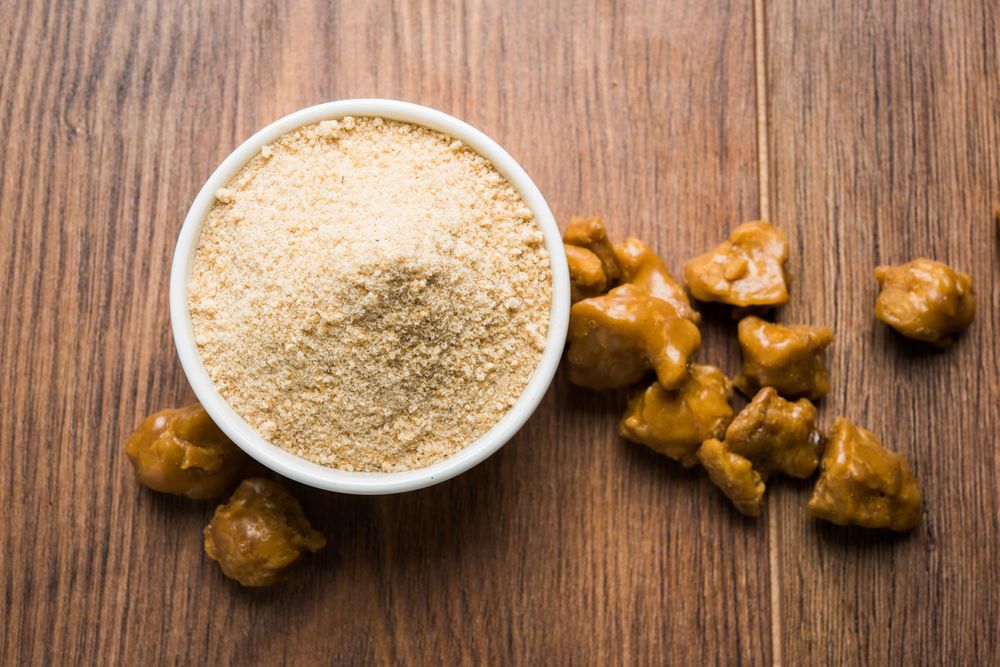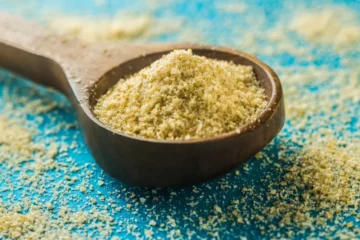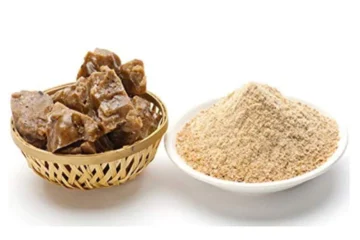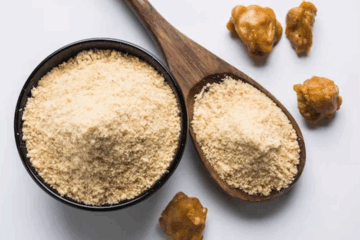How does asafoetida help reduce joint pain and arthritis symptoms?
Summary: Asafoetida has anti-inflammatory properties that can help reduce joint pain and arthritis symptoms by inhibiting the production of inflammatory markers in the body.
Asafoetida, a commonly used spice in Indian cuisine, is known for its powerful anti-inflammatory properties. These properties can be beneficial in reducing joint pain and arthritis symptoms. Here are the ways asafoetida helps:
- Inhibits the production of inflammatory markers in the body.
- Reduces swelling and pain in the joints.
- Improves blood circulation, promoting overall joint health.
- Contains compounds that have analgesic effects, providing pain relief.
Research has shown that asafoetida contains bioactive compounds such as ferulic acid and tannins, which exhibit anti-inflammatory and antioxidant activities. These compounds help in mitigating oxidative stress and inflammation, two key factors that contribute to joint pain and arthritis.
Furthermore, asafoetida’s ability to enhance blood flow can aid in delivering essential nutrients to the affected joints, promoting healing and reducing discomfort. Its analgesic properties provide immediate relief from pain, making it a valuable natural remedy for those suffering from arthritis.
What is the recommended dosage of asafoetida for joint pain and arthritis relief?
Summary: The recommended dosage of asafoetida for joint pain and arthritis relief is usually 200-500 mg per day, but it is best to consult with a healthcare provider.
Determining the correct dosage of asafoetida for joint pain and arthritis relief is important for its effectiveness and safety. General guidelines suggest:
- 200-500 mg of asafoetida powder per day.
- Starting with a lower dose and gradually increasing it as tolerated.
- Taking asafoetida with food to reduce the risk of gastrointestinal discomfort.
- Consulting with a healthcare provider for personalized dosage recommendations, especially if taking other medications or supplements.
It is essential to follow the recommended dosage to avoid potential side effects. Asafoetida can be taken in various forms, including powder, capsules, or tinctures. Mixing asafoetida powder with warm water or adding it to meals can enhance its absorption and efficacy.
For individuals with sensitive stomachs, starting with a lower dose and gradually increasing it can help the body adjust to the spice. Regular monitoring and consultation with a healthcare provider are crucial to ensure the optimal dosage for each individual’s needs.
Are there any side effects or precautions to consider when using asafoetida for joint pain and arthritis?
Summary: Common side effects of asafoetida include gastrointestinal issues and skin irritation. It is important to consult with a healthcare provider before using asafoetida.
While asafoetida can be beneficial, it is important to be aware of potential side effects and precautions:
- Gastrointestinal issues: May cause bloating, gas, and diarrhea if consumed in large quantities.
- Skin irritation: Can cause allergic reactions in some individuals when applied topically.
- Pregnancy: Should be avoided during pregnancy due to its potential to induce uterine contractions.
- Consulting with a healthcare provider: Essential before starting asafoetida, especially for individuals with underlying health conditions or those taking other medications.
Asafoetida contains compounds that can stimulate the gastrointestinal tract, leading to bloating and gas. To minimize these side effects, it is recommended to start with a lower dose and gradually increase it as tolerated.
Individuals with a known allergy to asafoetida or other similar spices should avoid its use to prevent skin irritation or allergic reactions. Additionally, pregnant women should avoid asafoetida due to its potential to induce uterine contractions, which could be harmful during pregnancy.
Consulting with a healthcare provider before incorporating asafoetida into the treatment regimen is crucial, especially for individuals with pre-existing medical conditions or those taking other medications. This ensures the safe and effective use of asafoetida without adverse interactions.
Can asafoetida be used in combination with other treatments for joint pain and arthritis?
Summary: Asafoetida can be used in combination with other treatments for joint pain and arthritis, but it is important to consult with a healthcare provider to avoid potential interactions.
Combining asafoetida with other treatments for joint pain and arthritis can enhance its benefits. Here are some considerations:
- Consulting with a healthcare provider to ensure safe combination with other medications or supplements.
- Using asafoetida alongside other natural anti-inflammatory agents like turmeric or ginger.
- Incorporating asafoetida into a balanced diet and healthy lifestyle for overall joint health.
- Monitoring for any adverse effects or interactions when combining asafoetida with conventional treatments.
Asafoetida can complement other natural anti-inflammatory agents such as turmeric, ginger, and boswellia. These herbs and spices can work synergistically to provide enhanced relief from joint pain and arthritis symptoms. For instance:
- Turmeric: Contains curcumin, a potent anti-inflammatory compound that can reduce joint pain and inflammation.
- Ginger: Has gingerol, which has anti-inflammatory and antioxidant effects beneficial for arthritis.
- Boswellia: Also known as Indian frankincense, it has been shown to reduce inflammation and improve joint function in arthritis patients.
When combined with conventional treatments such as NSAIDs or physical therapy, asafoetida can provide a more holistic approach to managing joint pain and arthritis. However, it is crucial to consult with a healthcare provider to ensure that there are no adverse interactions between asafoetida and other medications or supplements being used.
Incorporating asafoetida into a balanced diet and maintaining a healthy lifestyle, including regular exercise and weight management, can further enhance its benefits. Consistent monitoring and communication with a healthcare provider can help in achieving the best outcomes.
How long does it take to see results from using asafoetida for joint pain and arthritis?
Summary: Results from using asafoetida for joint pain and arthritis can vary, but some users may start to see improvements within a few weeks.
The timeline for experiencing relief from joint pain and arthritis symptoms with asafoetida can vary among individuals. Factors influencing the time to see results include:
- Dosage and frequency of asafoetida intake.
- Severity of joint pain and arthritis symptoms.
- Overall health and lifestyle of the individual.
- Consistency in using asafoetida as part of the treatment regimen.
While some individuals may notice improvements within a few weeks, it may take longer for others. Patience and consistent use are key to achieving the best results. Here are some factors to consider:
- Initial Response: Some individuals may experience initial relief from pain and inflammation within a few days of starting asafoetida.
- Gradual Improvement: For others, the improvement may be gradual, with noticeable changes occurring over several weeks or months.
- Consistency: Consistent use of asafoetida, along with adherence to the recommended dosage and lifestyle modifications, can significantly impact the effectiveness of the treatment.
- Individual Variability: Each individual’s response to asafoetida can vary based on factors such as age, overall health, and the severity of arthritis symptoms.
It is important to maintain open communication with a healthcare provider to monitor progress and make any necessary adjustments to the treatment plan. Patience and persistence are crucial, as the body may take time to respond to natural remedies like asafoetida.
Additionally, combining asafoetida with other natural anti-inflammatory agents and following a holistic approach to joint health, including a balanced diet and regular exercise, can enhance its effectiveness and contribute to long-term relief from joint pain and arthritis symptoms.
Conclusion
Asafoetida has shown promise as a natural remedy for joint pain and arthritis due to its anti-inflammatory and analgesic properties. However, it is important to consult with a healthcare provider before starting asafoetida to determine the appropriate dosage and ensure safety, especially when combining it with other treatments. With consistent use and a holistic approach to joint health, asafoetida may provide relief for those suffering from joint pain and arthritis. Incorporating asafoetida into a balanced diet and healthy lifestyle, along with regular monitoring and consultation with a healthcare provider, can help achieve the best outcomes for managing joint pain and arthritis symptoms.
Asafoetida can complement other natural anti-inflammatory agents such as turmeric, ginger, and boswellia. These herbs and spices can work synergistically to provide enhanced relief from joint pain and arthritis symptoms.





